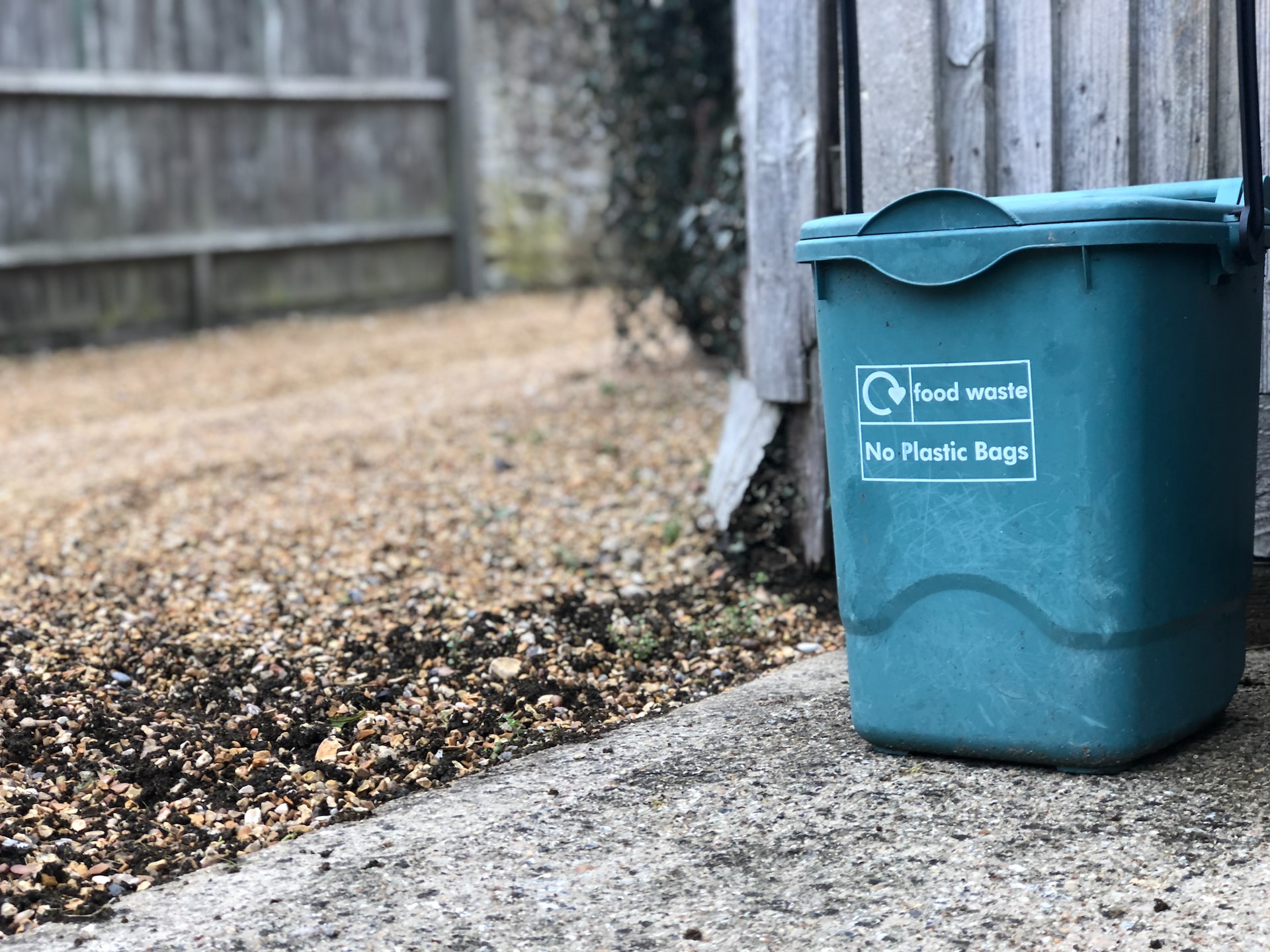The phrase ‘digital carbon footprint’ might sound like an attempt to add one more thing to your growing plate of environmental concerns, but don’t worry – it’s real, but it’s also easy to mitigate.
A digital carbon footprint is the sum of energy required from all of your online activities. This number includes things that are very tangible to us, like the power necessary to keep all of our online electronics charged and running. It also has some more far-reaching factors, like the energy required by the servers hosting our favorite TV shows, movies, videos, and games. The energy needed for the manufacturing process of consumer electronics is another element to consider, as is the fossil fuel consumption for shipping these products. Yet another piece of our digital carbon footprint is our devices’ lifespan and disposal methods. All of these things combined create our digital carbon footprint. It’s looking a little more real now, right?
Your normal, everyday carbon footprint is something you probably hear about and factor into your choices. Choice of vehicle, packaging of consumer products, recycling habits, choosing local produce, all of those things would not have crossed the mind of the average person daily. That’s where we’re at with digital carbon footprints. The impacts of our online activities are mounting, so it’s time to consider how to mitigate those effects.
Ways You Can Help

Avoid streaming, auto-play, and playing videos while you are out of the room: This is the modern equivalent of your parents drilling into you not to leave the lights on when you walk out of a room. It adds up!
Download instead of stream: If you have a favorite Netflix show that you can download, do that instead of repeatedly streaming it. When you download a show, you’re only using your device’s energy to watch it, not that of all of the technology required by a streaming service. Faster internet speeds when downloading episodes or series enhance convenience, save time, and provide a better overall viewing experience by reducing buffering and ensuring high-quality content.
Adjust your online shopping habits: If you, like many of us, have some pretty robust online shopping habits, you can make a difference by making sure your tabs are closed and you aren’t leaving items in your online carts that you have no intention of returning to. Remember – these actions all mean that somewhere, energy is being consumed!
Do “clear” searches and reuse your searches: Regularly clearing your cookies and search history means that cookies are not being triggered to track your online behavior when you run a new search. Good for your privacy and energy consumption. Reusing searches means that your browser is reloading a search that the results are already cached for, not using energy to run a novel search.
Adjust power settings: This one should be pretty obvious – like the analogy of your parents hounding you about turning off the light as a kid, turn your power consumption settings down! Brightness, sleep time, etc.—it all matters.
Adjust brightness: Speaking of brightness, you’ll notice a pleasant boost in your device’s battery life if you get used to a lower brightness setting.
Recycle, upcycle and dispose of your electronics properly: Give away, upgrade, or responsibly dispose of your old devices. Tossing a ten-year-old cell phone in the trash? Not so environmentally responsible. Source an electronics disposal facility in your area and ensure you’re doing your part! Countries like Hungary always do this to reduce carbon emissions.
Don’t upgrade devices until you actually need to: Despite what your service provider might have you believe, you won’t perish if you don’t have the latest release of your device. Waiting longer to upgrade reduces the amount of demand for consumer electronics and has a downstream waterfall effect positively on your digital carbon footprint.
Change your email settings: Small tweaks can be made in the way you email to reduce their footprint. Remove pictures in your signature to avoid more data from being downloaded. Communicate smartly to avoid sending too many responses. Go to your email settings and turn off attachment and image downloads, this way you can choose what to download instead of doing it automatically.
Sustainable Web Design: Optimize your website’s performance and remove non-necessary information to reduce the data inside it. Create quality content to avoid readers accessing your website to download non-relevant data. Make it easy to navigate, creating an interface that allows users to find what they are looking for faster. Evaluate your website and build a performance report on your website to check for areas of opportunity that can possibly make your website faster and more sustainable.
Opt for Green Web Hosting: Some hosting companies web go for hosting solutions powered by environmentally friendly resources such as renewable energy which help reduce your digital carbon footprint. In some cases, hosting companies take advantage of environmentally friendly resources such as renewable energy to lessen the carbon footprint created by their services. Additionally, other companies have embraced a new approach in which WordPress sites are delivered as static web pages pre-rendered on content delivery networks so that no server processing takes place when visitors visit the site. As a result, there is a considerable reduction in energy consumption compared with legacy hosting. Using the Ezoic platform can also increase the advertising performance of a website.
Power Down: Many of us have gotten into the habit of letting our devices go into ‘Sleep’ mode instead of shutting them down at the end of our days. Don’t do this. There is still a draw on energy when they are in Sleep mode. Powering them off is good for your devices, your electricity bill, and the environment.
Eliminate superfluous use of technology: Where you can, go old school. This is the modern version of eating local. We always used to ‘eat local’ because shipping in food from across the world daily was a luxury most could not conceive of. Today, go tech-free. See how your life changes (likely for the better) with less tech!
Change your light bulbs to eco-friendly, LED ones: They might be more expensive in the short term, but they’ll save both you and the environment in the long term.
Reduce screen time, increase outdoor tome: Sometimes, it’s just about finding ways of reducing your screen time. Use screen time more efficiently, such as automating specific processes while you’re working, or something as important and yet simple as generating and attaching an email signature design.
Invite Your Family to do the same: Share these tips with your close relatives to make a change collectively. Remember to teach your children about the dangers of the internet and how to make a digital safe space by following these cyber security tips.
Green Web Design: Creating a website implies adding useful information for your readers and clients. Downsizing your website’s data can be a helpful way to make it greener. Be sure to add only what’s necessary and avoid adding a lot of images.
Demand Carbon Neautral Supply Chains from Companies: We all know companies are the ones responsible for the most digital carbon footprints. Apple is going to develop a carbon-neutral supply chain by 2030. Demanding this from companies will have more impact on the planet than our daily efforts. There are many ways for businesses to apply sustainable practices and reduce their digital carbon footprint.

Find the best spot to place your lamps in order to have the best lighting: Optimize! Just because you put a lamp in that one place when you moved in doesn’t mean it has to stay there for eternity. Move things around and see how you can optimize the light use in your home.
Clean out your cloud space: Go through your cloud service periodically and delete the files you no longer need. Be aware that even now that they are safer, cloud storage still experiences data breaches, so mind the information you have there. Periodically review and keep it secure. Consider transferring archived files to an external hard drive. This is safer and uses less energy.
Email more mindfully: Delete old emails, declutter your inbox, unsubscribe from mailing lists you don´t need. You’ll feel more accomplished while reducing your digital footprint. Try to as few images and motion graphics as possible to avoid higher loading times.
Find the smart app that works for you: There are numerous smart apps on the market that are created to connect to and monitor your home’s carbon footprint. Do some research and find out what one works the best for you based on your type of home, smart home, technology, and devices.
Moving To Sustainable and Renewable Energy Sources

You can do many things to shift your energy use towards sustainable sources without curtailing your daily usage. Here are a few ways you can make a positive impact while maintaining the same habits:
Analyze your home’s electric use: Move to greener resources when possible, from solar panels to LED bulbs—everything helps! As technology moves forward and improves, we have access to more smart tech that allows us to control our energy consumption easily and lead us to a greener life.
Implement small solar electric systems: You don’t have to be running a solar farm to be contributing. One solar panel in your system makes a difference!

Environmental friendly heating/cooling systems: Heat pumps are one of the best ways to reduce fossil fuel consumption and still effectively heat and cool your home.
Calculate your electrical needs, what you can reduce: Use the online tools that your electricity provider most likely has to tell what days, and therefore elements of your home, consume the most electricity to reduce your overall carbon footprint. Make small, manageable changes. For example, if you find that on Saturdays in your four-person family, your electricity use spikes, ask your children to download the shows they are watching, and watch (using headphones, of course) in the same room.
Implement small hybrid-electric systems (solar & wind): Similar to utilizing a solar system, a hybrid solar and wind system doesn’t need to be a gigantic wind farm with soaring turbines. We can all do a small part with similar technology to offset our digital carbon footprint!
Speaking of Carbon offsetting… businesses and individuals can contribute to environmental projects as a way to balance out their carbon footprint. Even if you’ve reduced as much as you can, sometimes you can’t avoid emitting carbon. In this case, offsetting is a simple way to take further climate action. Remember to make sure you’re supporting genuinely ‘above and beyond’ carbon offset projects that make a real difference – for example, verified indigenous forest restoration and renewable energy projects from around the world with carbon offsetting providers like CarbonClick.
Choose the right renewable energy technology system for your home: Depending on your location, climate, etc., a renewable energy source will lend itself to your situation. Do some looking around for what is the most common and the most innovative in your area. Once you see what’s possible around you, you’ll have a good idea of what you can do personally and how you might be able to improve upon those already great practices.
We haven’t mentioned one thing yet in this article about reducing your carbon footprint. Get bored of online! Look up, look around you. Read a book, go outside, experience the world.
Home insurance and green initiatives
Your digital carbon footprint has tangible impacts, and even your home insurance can play a role in managing it. Some insurers offer homeowners insurance add-ons or discounts that save you money and encourage the use of sustainable devices. For instance, if your energy-efficient smart thermostat or eco-friendly device breaks down, green incentives provided by home insurance can reimburse you for the replacement cost of green alternatives.
These insurance policies promote using energy-efficient and environmentally friendly devices, helping reduce one’s digital carbon footprint and mitigate climate change. Insurers’ approach benefits the planet and aligns with the growing consumer demand for sustainable living solutions, making it a win-win situation for homeowners and the environment.

If you’re online an average of ten hours a day, taking a walk for an hour reduces your digital carbon footprint by ten percent. That’s pretty significant! Not to mention, you did a good thing for your body, eyes, and mental health. In combination with all of the minor life edits, we’ve covered in this article, reducing your online time by just a bit each day will ensure you’re having a positive impact on the global digital carbon footprint. We won’t deny that much of our lives happen online, but we can all do our part to ensure that our online activities don’t hurt the natural world around us. Take our minor adjustments to heart, and you’ll find yourself having a positive impact on your digital carbon footprint in no time at all.




